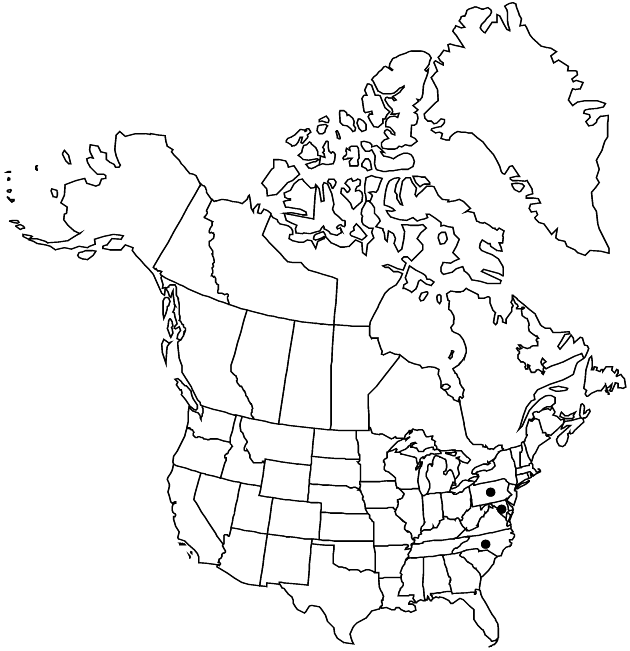Difference between revisions of "Symphyotrichum depauperatum"
Phytologia 77: 279. 1995.
FNA>Volume Importer |
imported>Volume Importer |
||
| (2 intermediate revisions by 2 users not shown) | |||
| Line 8: | Line 8: | ||
}} | }} | ||
|common_names=Starved or serpentine aster | |common_names=Starved or serpentine aster | ||
| + | |special_status={{Treatment/ID/Special_status | ||
| + | |code=E | ||
| + | |label=Endemic | ||
| + | }}{{Treatment/ID/Special_status | ||
| + | |code=C | ||
| + | |label=Conservation concern | ||
| + | }} | ||
|basionyms={{Treatment/ID/Basionym | |basionyms={{Treatment/ID/Basionym | ||
|name=Aster depauperatus | |name=Aster depauperatus | ||
| Line 69: | Line 76: | ||
|publication title=Phytologia | |publication title=Phytologia | ||
|publication year=1995 | |publication year=1995 | ||
| − | |special status= | + | |special status=Endemic;Conservation concern |
| − | |source xml=https:// | + | |source xml=https://bitbucket.org/aafc-mbb/fna-data-curation/src/2e0870ddd59836b60bcf96646a41e87ea5a5943a/coarse_grained_fna_xml/V19-20-21/V20_1139.xml |
|tribe=Asteraceae tribe Astereae | |tribe=Asteraceae tribe Astereae | ||
|genus=Symphyotrichum | |genus=Symphyotrichum | ||
Latest revision as of 19:58, 5 November 2020
Perennials, 20–50 cm, colonial or cespitose; branched rhizomatous. Stems 1–3+, erect (straight, brittle), glabrate. Leaves thin, margins ciliate, abaxial faces glabrous or glabrate, adaxial sparsely strigose; basal withering by flowering (new rosettes developing at flowering), sessile, blades lanceolate to oblanceolate or spatulate, 20–40+ × 3–5+ mm, bases attenuate, margins sparsely serrate to subentire, strigose-ciliate, apices acute to obtuse; proximal cauline usually withering by flowering, sessile, blades linear-oblanceolate, ca. 30 × 2 mm, bases tapering, margins entire, scabrous, apices acute; distal sometimes withering by flowering, sessile, blades linear, 10–30 × 1.5–5 mm, reduced distally, bases cuneate or not tapering, margins entire, apices acute, ± mucronulate. Heads in open, wide, paniculiform arrays, branches arching, sometimes ± secund, abundantly bracteate. Peduncles long, gradually reduced distally on branches, glabrous or glabrate, bracts 3–17+, linear, mucronate. Involucres cylindro-campanulate, (3.2–) 3.4–4 (–4.3) mm. Phyllaries in 3–5 series, oblong-lanceolate, unequal, bases indurate 1/2–3/4, margins narrowly scarious, slightly or not erose, sparsely ciliolate or not distally, green zones lanceolate, apices acute, involute, slightly spreading, faces glabrous. Ray florets 7–14; corollas usually white, seldom pink, laminae (3–)3.8–5.4(–6.2) × 0.5–1.1 mm. Disc florets 7–17; corollas yellow becoming brown, (2.2–)2.5–2.9(–3.1) mm, tubes shorter than narrowly funnelform throats, lobes lanceolate, 0.3–0.6(–0.9) mm. Cypselae yellowish brown, obovoid, ± compressed, ± 1.2–1.3 mm, 3–4-nerved, faces sparsely to moderately strigillose; pappi white (yellowish), 2.4–3.3 mm. 2n = 16.
Phenology: Flowering Aug–Oct.
Habitat: Serpentine or diabasic soils
Elevation: 400–1000 m
Discussion
Of conservation concern.
Symphyotrichum depauperatum is federally listed in the United States.
Selected References
None.
